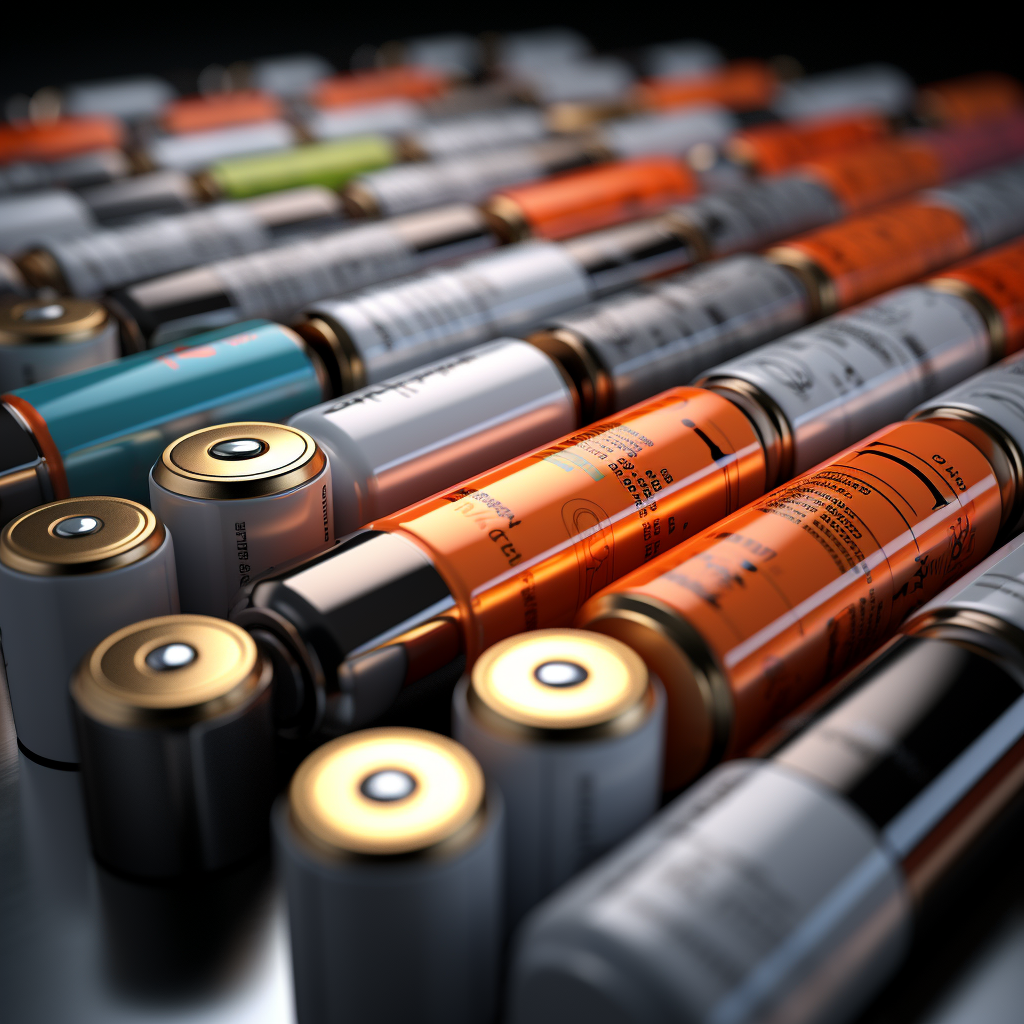Contents
- 1 The Importance of Energy Storage
- 2 How Batteries Play a Role in Energy Storage
- 3 Top 10 Battery Manufacturers for Energy Storage
- 4 Factors to Consider When Selecting a Battery Manufacturer
- 5 Environmental Impacts and Sustainability Efforts of Top Manufacturers
- 6 Conclusion
- 7 Frequently Asked Questions (FAQs)
Energy storage has gained momentum in recent years, driven by the increasing need to accommodate renewable energy sources and provide grid stability. Batteries, specifically, have emerged as front-runners in the energy storage realm, proving to be efficient, scalable, and flexible solutions. The demand for these batteries has triggered an exponential growth in battery manufacturing.
Table 1: Global Battery Energy Storage System Installed Capacity (2015-2021)
| Year | Installed Capacity (GWh) |
|---|---|
| 2015 | 3.2 |
| 2016 | 6.7 |
| 2017 | 11.3 |
| 2018 | 19.4 |
| 2019 | 30.1 |
| 2020 | 46.7 |
| 2021 | 68.5 |
Source: Data based on estimates from industry reports.
This table showcases the surge in the global battery energy storage system capacity, hinting at the significant role batteries play in our transition to a more sustainable energy system. As we dive into the realm of energy storage batteries, it becomes essential to identify the top manufacturers leading this charge. These industry giants not only produce reliable and efficient products but also heavily influence energy storage trends and research.

The Importance of Energy Storage
In today’s rapidly changing energy landscape, energy storage plays a pivotal role. As we steer away from fossil fuels and lean towards renewable energy sources, the need for efficient energy storage solutions becomes imperative.
Why is Energy Storage Vital?
- Integration of Renewable Energy: Solar and wind energy are intermittent. Energy storage systems ensure that there’s a continuous power supply even when the sun isn’t shining or the wind isn’t blowing.
- Grid Stability and Reliability: Energy storage can quickly react to changes in electricity demand, ensuring that the grid remains stable.
- Reduction in Energy Costs: By storing excess energy during low-demand periods and releasing it during peak times, energy storage systems can help reduce electricity costs.
- Enhances Energy Independence: Energy storage reduces the reliance on imported fuels, thus improving energy security and resilience.
Table 2: Benefits of Energy Storage
| Benefit | Explanation |
|---|---|
| Demand Charge Management | Reduces peak energy demand, lowering electricity bills. |
| Frequency Regulation | Maintains the grid’s frequency, ensuring a stable power supply. |
| Renewable Integration | Allows for better utilization of renewable energy sources. |
| Load Shifting | Moves energy consumption from one point in time to another to balance demand. |
| Backup Power | Provides emergency power during outages. |
By addressing these critical areas, energy storage acts as the backbone of the modern energy infrastructure, ensuring that both homes and businesses have reliable, continuous access to power.
How Batteries Play a Role in Energy Storage
Batteries, being one of the most mature and scalable forms of energy storage, are at the forefront of this transition. But what makes batteries so special?
- Versatility: Batteries can be used in a variety of applications, from small-scale residential use to large-scale industrial use.
- Scalability: Unlike other forms of energy storage, battery systems can be easily scaled up or down based on demand.
- Rapid Response: Batteries can release stored energy almost instantaneously, making them ideal for applications that require a quick response.
Table 3: Comparison of Energy Storage Methods
| Method | Response Time | Scalability | Lifespan | Environmental Impact |
|---|---|---|---|---|
| Batteries | Instantaneous | High | Medium | Moderate |
| Pumped Hydro | Slow | Low | High | High |
| Compressed Air | Slow | Medium | High | Low |
| Flywheels | Very Fast | Low | Medium | Low |
This table illustrates how batteries, in comparison to other energy storage methods, strike a balance between response time, scalability, lifespan, and environmental impact. Their unique combination of traits positions them as a top contender in the energy storage domain.

Top 10 Battery Manufacturers for Energy Storage
The battery manufacturing industry, a multi-billion-dollar sector, is led by prominent players whose innovations and products define the trajectory of energy storage solutions. Here, we list and discuss the top 10 battery manufacturers globally.
4.1. Tesla
Headquartered: Palo Alto, California, USA
Key Product: Powerwall, Powerpack, Megapack
Tesla, more renowned for its electric vehicles, has also carved a significant niche in the battery storage domain. Their Powerwall caters to residential needs while the Powerpack and Megapack serve industrial applications. Elon Musk’s vision for a sustainable energy future is evident in Tesla’s aggressive push towards improving battery efficiency and lifespan.
4.2. LG Chem
Headquartered: Seoul, South Korea
Key Product: RESU series
LG Chem, a branch of the LG conglomerate, boasts a rich lineup of lithium-ion batteries. Their RESU series, known for its compactness and efficiency, is popular among homeowners seeking solar energy storage solutions.
4.3. Panasonic
Headquartered: Kadoma, Osaka, Japan
Key Product: Home Storage Battery System
Once Tesla’s primary battery cell provider, Panasonic is an industry veteran with over a century of experience. Their home storage battery systems emphasize safety and longevity, catering to a global clientele.
4.4. Samsung SDI
Headquartered: Yongin, South Korea
Key Product: ESS (Energy Storage System)
Samsung SDI’s contributions to the energy storage sector are significant. Their ESS solutions, designed for both homes and industries, prioritize energy optimization and efficiency.
4.5. BYD
Headquartered: Shenzhen, China
Key Product: B-Box
BYD, initially an automobile company, ventured into the battery domain with notable success. Their B-Box series, known for its modular design, offers flexible energy storage solutions for varied needs.
4.6. CATL
Headquartered: Ningde, Fujian, China
Key Product: LFP and NMC batteries
Contemporary Amperex Technology Co. Limited (CATL) has swiftly risen to prominence in the battery world. They are leading suppliers for various automotive companies due to their advanced lithium iron phosphate (LFP) and nickel-manganese-cobalt (NMC) batteries. Their commitment to research and development is evident in their extensive patent portfolio.
4.7. Duracell
Headquartered: Bethel, Connecticut, USA
Key Product: PowerForward
While traditionally known for consumer batteries, Duracell has made strides into the renewable energy storage sector with their PowerForward initiative. Their grid-scale solutions, although in nascent stages, show promise in terms of efficiency and reliability.
4.8. Envision AESC
Headquartered: Yokohama, Japan
Key Product: Grid-scale lithium-ion batteries
Emerging as a competitive player in the battery manufacturing arena, Envision AESC emphasizes innovation, safety, and affordability. Their grid-scale lithium-ion batteries have received commendation for their performance metrics and safety standards.
4.9. NorthVolt
Headquartered: Stockholm, Sweden
Key Product: Voltpack
NorthVolt, founded by ex-Tesla executives, aims to drive the European transition to renewable energy. Their product, Voltpack, caters to the demands of grid solutions, commercial, and industrial energy storage needs.
4.10. Exide Technologies
Headquartered: Milton, Georgia, USA
Key Product: GNB Tubular LMX
Exide Technologies, a storied company with over a century of experience, has persistently evolved to address the changing energy storage needs. Their GNB Tubular LMX batteries, designed for high-demand environments, are widely recognized for their durability and performance.
Factors to Consider When Selecting a Battery Manufacturer
When choosing a battery manufacturer for energy storage solutions, one should consider several factors to ensure they align with specific requirements and standards.
1. Battery Technology and Chemistry: Different applications demand specific battery chemistries. While lithium-ion batteries are most common, the nuances like LFP (Lithium Iron Phosphate) or NMC (Nickel Manganese Cobalt) might be more suited to certain needs.
2. Efficiency and Degradation: Batteries aren’t immune to wear and tear. It’s vital to understand how quickly a battery’s capacity degrades over time and its overall efficiency in energy conversion.
3. Scalability: Depending on the project, one might need to scale up or down. Manufacturers that offer modular solutions can cater to such scalability requirements with ease.
4. Safety Standards: Battery storage systems must adhere to stringent safety standards. Always check for certifications and compliance documents before making a choice.
5. Cost-effectiveness: While the initial investment is a factor, one must also consider long-term operational costs, warranty conditions, and potential savings.
6. Environmental Impact: In today’s era of sustainability, it’s important to consider the environmental footprint of the battery – both in manufacturing and end-of-life disposal.
7. Company Reputation: Established companies often bring reliability, but newer entrants might offer innovative solutions. Customer reviews, case studies, and industry recognition can provide insights into a company’s reputation.
Table 6: Evaluation Criteria for Battery Manufacturers
| Criteria | Importance | Notes |
|---|---|---|
| Battery Technology/Chemistry | High | Aligns with application-specific needs |
| Efficiency & Degradation | High | Affects long-term performance |
| Scalability | Medium | Vital for projects with potential expansion |
| Safety Standards | High | Ensures user and infrastructure safety |
| Cost-effectiveness | Medium | Weighs short-term costs against long-term value |
| Environmental Impact | Medium | Aligns with sustainability goals |
| Company Reputation | Medium | Balances between established reliability and potential innovation from newer entrants |
This table offers a structured approach to evaluate battery manufacturers based on diverse criteria, aiding decision-making processes.

Environmental Impacts and Sustainability Efforts of Top Manufacturers
With growing concerns about environmental degradation and climate change, battery manufacturers have faced scrutiny over the environmental implications of their products. However, many have taken significant strides in adopting sustainable practices.
Tesla, for instance, has been vocal about its commitment to sustainability. Their Gigafactory in Nevada is designed to be net-zero energy with renewable sources fulfilling its energy needs. Moreover, Tesla’s battery recycling program aims to recover critical metals efficiently, minimizing wastage.
LG Chem and Samsung SDI have both integrated green practices in their manufacturing processes. Their investments in R&D also focus on developing batteries with lower resource requirements and higher energy densities.
CATL has invested heavily in its recycling facilities, ensuring that used batteries don’t end up in landfills. Their goal is to reduce the carbon footprint of each battery throughout its lifecycle.
While these efforts are commendable, the industry as a whole has a long way to go. Transparent supply chains, reduced reliance on rare minerals, and efficient recycling systems are the need of the hour.
Conclusion
In the realm of energy storage, batteries emerge as pivotal components, enabling the integration of renewable sources and grid stability. The top 10 battery manufacturers showcased their expertise, advancing the transition to a sustainable energy future. As we prioritize efficiency, safety, and environmental responsibility, these industry leaders pave the way for innovative and reliable energy storage solutions.
Frequently Asked Questions (FAQs)
- What is the importance of energy storage?
- Energy storage is crucial for integrating renewable energy sources, ensuring grid stability, reducing energy costs, and enhancing energy independence.
- How do batteries play a role in energy storage?
- Batteries offer versatility, scalability, and rapid response, making them ideal for storing and releasing energy efficiently in various applications.
- Who are the top 10 battery manufacturers for energy storage?
- The top 10 battery manufacturers include Tesla, LG Chem, Panasonic, Samsung SDI, BYD, CATL, Duracell, Envision AESC, NorthVolt, and Exide Technologies.
- What factors should be considered when selecting a battery manufacturer?
- Factors to consider include battery technology, efficiency, scalability, safety standards, cost-effectiveness, environmental impact, and company reputation.
- How are battery manufacturers addressing sustainability?
- Manufacturers like Tesla, LG Chem, and CATL have implemented sustainability efforts, such as renewable energy use, recycling programs, and reducing resource consumption.
- How can batteries contribute to a greener future?
- Batteries enable the integration of renewable energy, reduce reliance on fossil fuels, and promote a more sustainable and environmentally friendly energy system.
- Which battery chemistry is best for specific applications?
- The choice of battery chemistry depends on the specific needs of the application. For example, LFP batteries are known for their safety and longevity, while NMC batteries offer higher energy density.
- What is the future outlook for battery energy storage?
- The future of battery energy storage looks promising, with ongoing advancements in technology, increased efficiency, and a focus on environmental sustainability.
- Are there any safety concerns with energy storage batteries?
- Battery manufacturers prioritize safety standards to minimize risks. However, improper installation and maintenance can lead to safety issues, making professional installation crucial.
- How can consumers benefit from energy storage solutions?
- Consumers can benefit from reduced electricity costs, increased energy independence, reliable backup power during outages, and contributing to a greener, sustainable future.



2 comments
[…] how heat interacts with batteries requires a brief dive into battery science. A typical car battery, known as a lead-acid battery, consists of lead and lead dioxide plates submerged in a sulfuric […]
[…] stationary storage stands at the forefront of energy transition, catalyzing a shift towards a more sustainable and […]